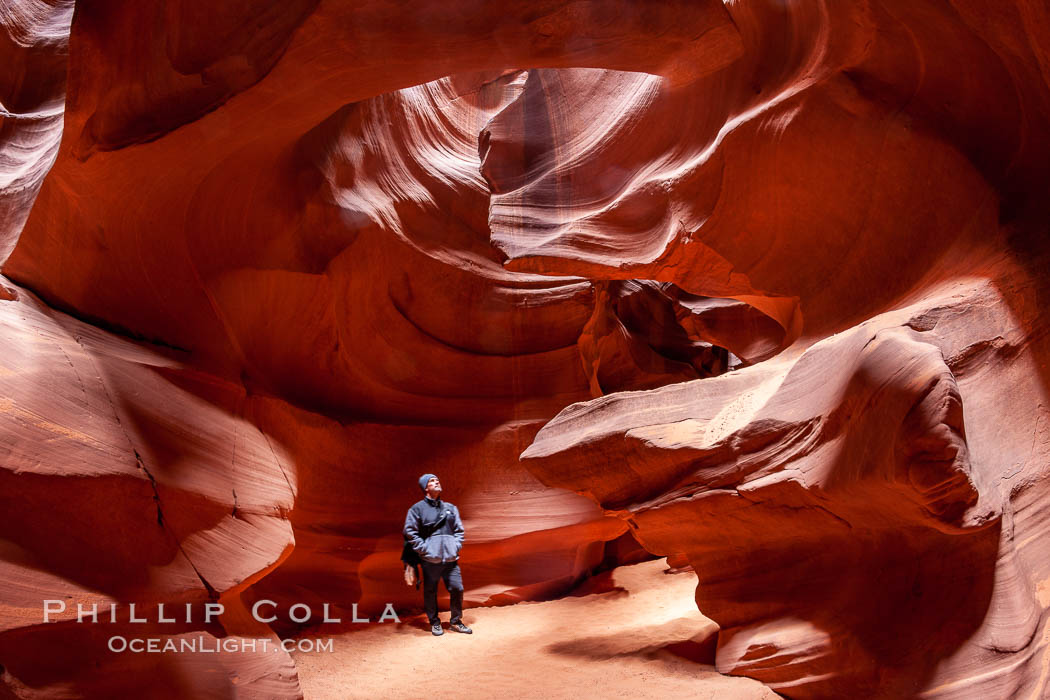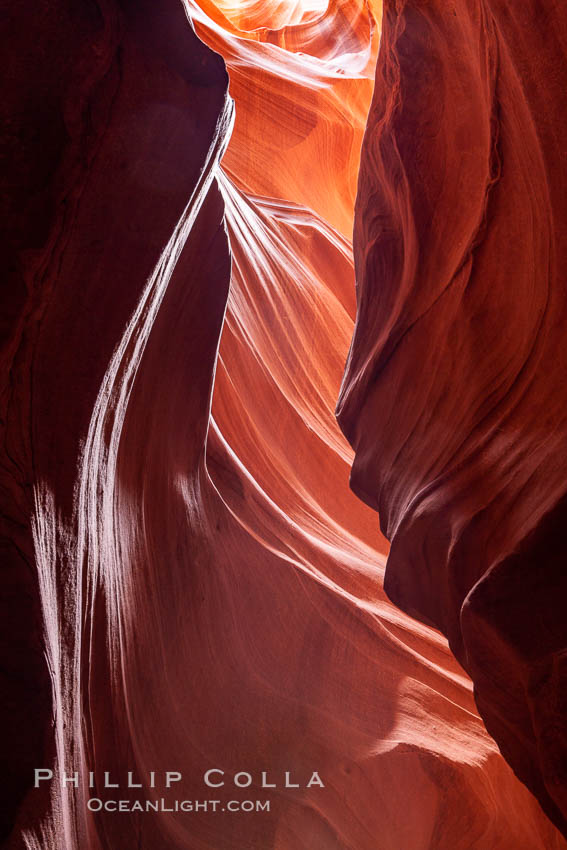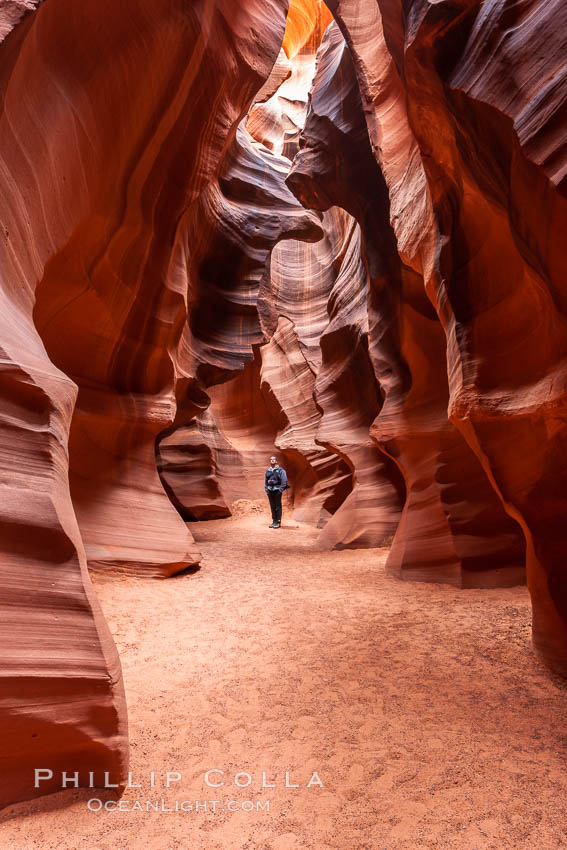Antelope Canyon is a slot canyon near Page, Arizona. I recently spent a day there shooting the upper canyon (there are two slot canyons, “upper” and “lower”) and had a blast. We had Antelope Canyon virtually to ourselves (a small group of five) for several hours.
A hiker admiring the striated walls and dramatic light within Antelope Canyon, a deep narrow slot canyon formed by water and wind erosion.
Image ID: 18009
Location: Navajo Tribal Lands, Page, Arizona, USA
Slot canyons are formed when water and wind erode a cut through a (usually sandstone) mesa, producing a very narrow passage that may be as slim as a few feet and a hundred feet or more in height. The Upper Antelope Slot Canyon is likely the world’s most well-known slot canyon, having appearing in films, television commercials and thousands of published photographs. The sandstone striations, wildly curving walls, ethereal light and tortured twisting passages that characterize Upper Antelope Canyon draw visitors and photographers year round, to the point that the canyon becomes jammed with people in the hot hot hot summertime.
Antelope Canyon, a deep narrow slot canyon formed by water and wind erosion.
Image ID: 18000
Location: Navajo Tribal Lands, Page, Arizona, USA
Normally the Antelope Canyon slot canyons are dry and sandy, but flash floods form suddenly, transforming the slot canyon in minutes into a roiling, water-filled trap in rainy weather. Tragically, in 1997 a flash flood in the lower Antelope Canyon slot canyon killed eleven people of a party of twelve. Both the upper and less-visited lower slot canyons in Antelope Canyon are accessible only through permit and are located on LaChee Navajo tribal lands near Page, Arizona.
A hiker admiring the striated walls and dramatic light within Antelope Canyon, a deep narrow slot canyon formed by water and wind erosion.
Image ID: 17993
Location: Navajo Tribal Lands, Page, Arizona, USA






